
I do like a spot of literary sleuthing, and at the moment I’m reading Sybille Bedford’s Jigsaw, in which she describes her upbringing in Feldkirch in the “Grand-Duchy of Baden” during the second and third decades of the last century. Jigsaw reprises in a more memoir-like way the same territory as her first novel, A Legacy: German aristocracy, between-the-wars bohemianism, the Sanary-sur-mer literati exiled following Hitler’s accession to power in 1933. Her books blur the boundaries between autobiography, fiction and travel writing; her lush, rambling sentences with their throwaway gems appeal to my wandering European ear. She’s at home in Europe in a way that so few English writers are – perhaps Paddy Leigh Fermor is her nearest europhile. So I looked up Feldkirch and found that it’s barely a half hour from here in Basel, along the edge of the Black Forest, between Colmar in France and Freiburg in Germany. Off I went.
The villages along the Rhine corridor punctuate well ordered wine country. Church, bank and Rathaus sport the same trim you see all over this three-cornered world: a pink sandstone that knows no borders. It’s spring and the neat fields are ploughed, seeded and just waiting for rainfall to make the push. Daffs and primrose beds on the verges, around stone crucifixes marking crossroads. Hunting look-outs at the edge of trees have a rickety ominous look, recalling the wars fought along this stretch where the German and the French worlds clashed.
The locality of that scene was a southern corner of Germany, what was then, in 1914, the Grand-Duchy of Baden. The house was walking minutes from the French border, a longish carriage ride from the Swiss. When the war began that summer (I was three) my father, who was too old for war and against it, said that we must all take refuge with his parents-in-law in Berlin.
 Sybille’s full name was Sybille Aleid Elsa von Schoenebeck (1911-2006). The village schoolmaster addressed her as Baronin Billi. Her father was Baron Maximilian von Schoenebeck (1853-1925), a twice-married lieutenant colonel and art collector belonging to the south German family line. Her mother was Elizabeth Bernhardt, from a part-English Hamburg Jewish family – the haute juiverie. It was the Baron’s second marriage into a Jewish milieu, and Sybille’s early years were spent with his former in-laws at Voss Strasse in Berlin. The Schloss in Feldkirch was a wedding present from second wife to impecunious husband. Mother was very pretty, considerably younger than Sybille’s father, flighty as we used to say in Ireland, and the marriage didn’t last. Sybille’s period of residence in Feldkirch was between the end of the war in 1918 and her father’s death in 1925, when she went to stay with her mother and her mother’s much younger lover in Italy. This combination of romantic bohemianism, German Catholic aristocracy, Jewish mercantile class and raffish art characterises Sybille Bedford’s peripatetic life and work.
Sybille’s full name was Sybille Aleid Elsa von Schoenebeck (1911-2006). The village schoolmaster addressed her as Baronin Billi. Her father was Baron Maximilian von Schoenebeck (1853-1925), a twice-married lieutenant colonel and art collector belonging to the south German family line. Her mother was Elizabeth Bernhardt, from a part-English Hamburg Jewish family – the haute juiverie. It was the Baron’s second marriage into a Jewish milieu, and Sybille’s early years were spent with his former in-laws at Voss Strasse in Berlin. The Schloss in Feldkirch was a wedding present from second wife to impecunious husband. Mother was very pretty, considerably younger than Sybille’s father, flighty as we used to say in Ireland, and the marriage didn’t last. Sybille’s period of residence in Feldkirch was between the end of the war in 1918 and her father’s death in 1925, when she went to stay with her mother and her mother’s much younger lover in Italy. This combination of romantic bohemianism, German Catholic aristocracy, Jewish mercantile class and raffish art characterises Sybille Bedford’s peripatetic life and work.
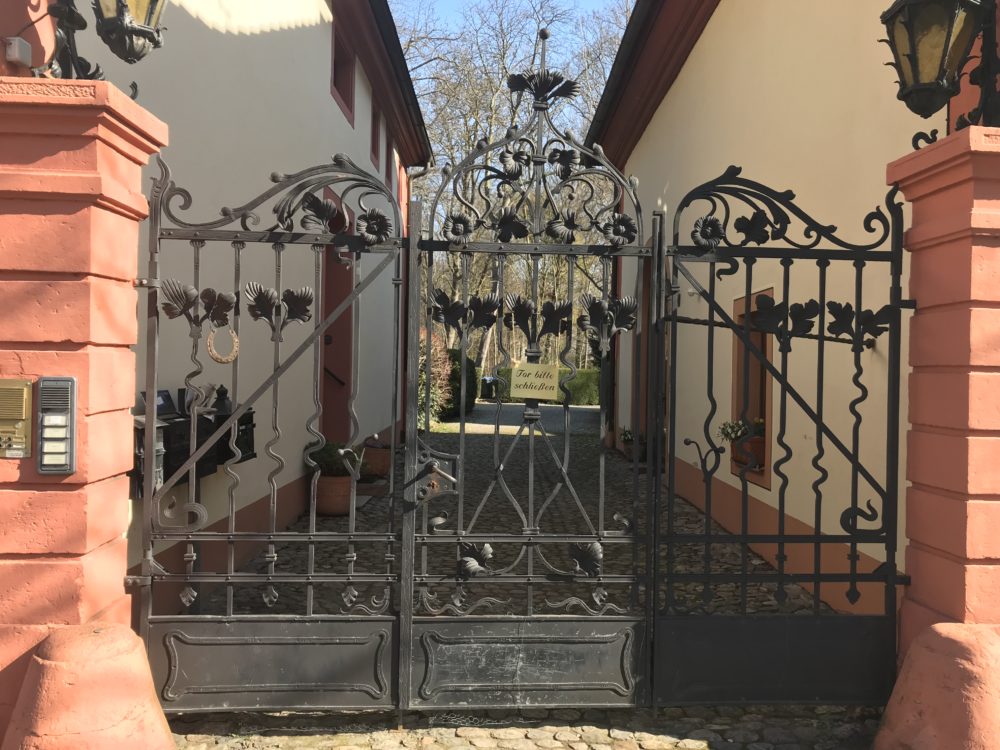
Entrance gate to Schloss Feldkirch today.
It must be 1919. We are back in Baden, at our place, in the village of Feldkirch. An old name – meaning a church in a field. The church, rustic Romanesque, is still there, our house is a Schloss, a small château, inside there are flights of rooms filled with my father’s collection of furniture and objets d’art, the ceilings are high and to me all seem vast.
Feldkirch, a few miles from the French border, is predominantly Catholic. It has a pretty baroque church with a striking ornate tower visible from a distance across the Rhine plain – St. Martin in the Fields – which is where I began my sleuthing. There was a one-page history of the church tacked up on a noticeboard under the stairs to the choir. From it I gleaned that some sort of way station had been there since the 12th century (the principal pilgrim route south to the Crusades).

Arms of the Counts von Wessenberg, Feldkirch choir stalls, where Sybille Bedford sat as a child.
The choir stalls were wormy and finely carved, with the von Wessenberg coat of arms inset. There was a red sandstone tomb of Philip Erich von Wessenberg, on his knees in front of the Virgin. The church, on a warm spring day, was heated. A tiny chapel to the left of the church entrance had at different times been a baptistry (Spritzenhaus) as well as a laying-out room (Beinhaus): both ends of the journey marked with pomp and circumstance.

Memorial stone for Philip Erich von Wessenberg in St. Martin’s, Feldkirch.
In Jigsaw, Sybille describes the church with the affectionate detail of the collapsed Catholic:
Women looked after the altar-linen, swept the church – and a beautiful small church it was, pure-arched, white-washed, plain – it was the virgins’ job (virgins of any age) to bring flowers and branches, to polish the censer and candle-sticks. The mayor and my father in turn provided the wine for mass; the boys I played with served as acolytes. Rosary and missal were treasured private possessions. […] The château party had their own stall in the choir beside the altar, and we did not come in by the porch but through the presbytery garden and the sacristy.
And there they all were, waiting in the wings: the carved pews for the château gentry, the indented cushion for the sacristan, a side door into the presbytery garden.
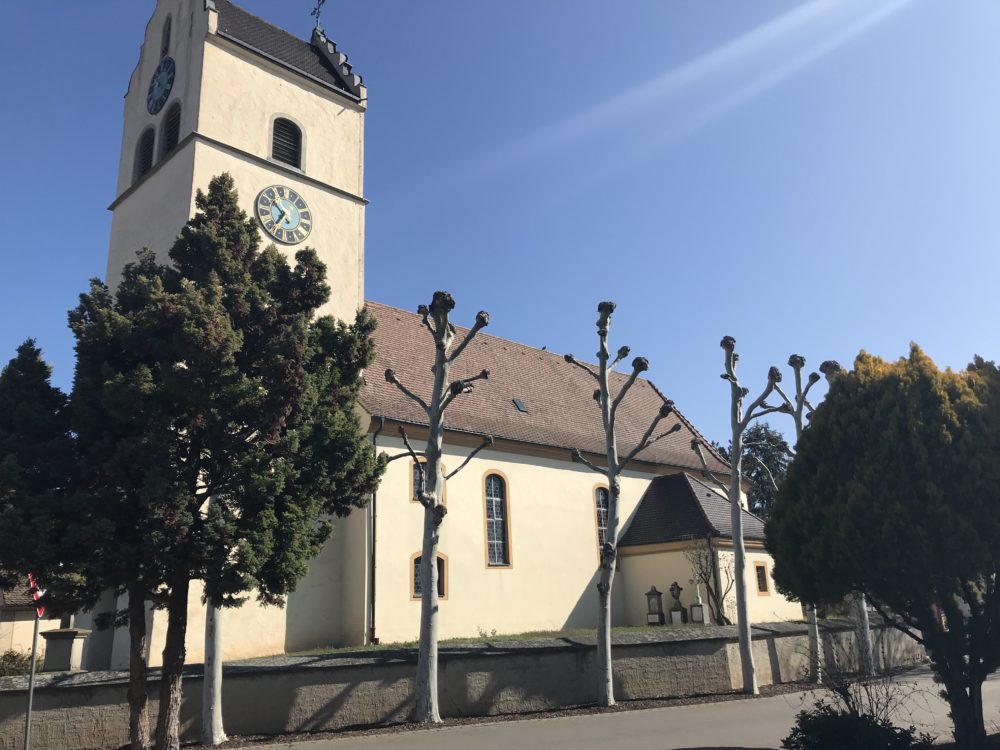
St. Martin in the Fields, Feldkirch.
In her first and perhaps best novel, A Legacy (1956), Bedford describes the social make-up of her father’s side of the family, fictionalised in the person of Julius Maria von Felden.
…their seat had always been a warm corner of Baden, that mild banal rural country of meadows and trout-streams, small farms, low mountains and small towns; their home was Catholic Western Continental Europe, and the centre of their world was France. They ignored, despised, and later dreaded Prussia; and they were strangers to the sea.
The Schloss is a minute’s walk away from St. Martin’s church and dates from around 1650. The von Wessenbergs were the noble family occupying it for many generations thereafter. It was Ignaz Heinrich von Wessenberg, the family poet, who wrote “Gruß an Feldkirch” / “Greetings to Feldkirch” in 1826:
Manch alter Freund am alten Ort zeigt jetzt sein Antlitz mir / Many the friends from the old place who now reappear
Die bläulichen Vogesen dort, der dunkle Schwarzwald hier / like the bluish Voges across the way, the Black Forest right here;
So mancher Baum, der Frucht mir bot, der Traubenhügel Glanz / many a fruit-laden tree or bunch of glistening grapes bent low
Das alte Früh- und Abendrot, im Teich des Mondes Glanz / to feed me in the good old days or in moonlight’s watery glow.

French reservists responding to the call, by Pierre-Georges Jeanniot.
Baden was an independent state until the Franco-Prussian War of 1870, a part of the Holy Roman Empire until 1807. Following the defeat of France in 1871, the grand-duchy became part of a newly-expanded and united Germany. The allegiance of the Catholic nobility, from which Sybille Bedford’s father descended, leaned somewhat more towards France in the west than to the Protestant Prussians from the north. Their southern German was “full of wrong inflections and French words … with the buzzing slur of the Baden peasants.” Promotion went by preferment and adaptation to the reigning powers – jobs for the boys, a civil service staffed with northerners barking Hochdeutsch commands. I imagine it as a bit like the Northern Ireland of my youth; only Loyalists made their way up the ladder at Harland & Wolff, the ranks of the Royal Ulster Constabulary resolutely for Queen and Union but not for Pope and a nation once again. In Baden there was a good deal of clicking and bowing, bowing and clicking.
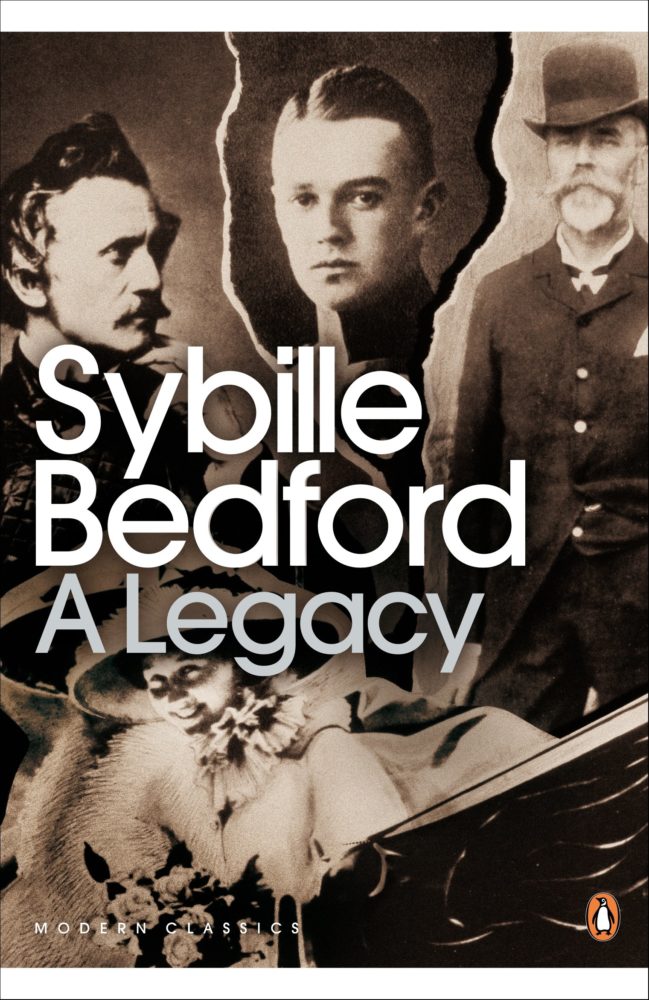
A Legacy by Sybille Bedford, Brideshead meets Buddenbrooks
Her father believed there was a ghost in the Schloss, and so did Sybille when he sent her down to the cellar to fetch some claret. It was the ghost of the same Bishop Ignaz von Wessenberg haunting his childhood home, as Sybille recalled in precise, well-spoken, German-inflected English on Desert Island Discs in July 1998 – some eighty years later:
He believed there was a ghost. And I did too. And I was supposed to go into the cellar. I was always frightened … and what I’d learned from the village was to cross myself, and I didn’t have a hand free to cross myself, with a candle in one and a bottle of claret in the other. It was a great problem…
Her father’s love of fine wine and a proper table stood Sybille in good stead. She went on to become a travel writer for Esquire, Vogue and Harpers, in a loose, discursive manner like that other foodie and writer-wanderer in these parts, MFK Fisher. Travel and food went hand in hand. Sybille’s pieces have been collected in Pleasures and Landscapes (2003). She was a forerunner of a certain kind of writing about the south of France, which reaches its thin end with Peter Mayle’s A Year in Provence. She belonged to “the early middle period of the automobile”, a Club de l’Automobile des Femmes which includes such spirited paid-up members as Edith Wharton (A Motor Flight Through France), Annemarie Schwarzenbach (All the Roads are Open) and the paintings of Tamara de Lempicka. Here is Sybille describing that first flush of female freedom at the wheel in the late 1920s:
The Model T had done its good work and was being left behind. Balloon tyres and self-starters had come in, and reasonable speeds; comic breakdowns were a thing of the past. Cars were cheap enough, manageable enough, worked well enough to be bought and used with insouciance. One could take a chum, a girl, a suitcase, set out on a fine morning, start in the cool of night, comme le coeur vous en dise. … Suddenly there was choice; the world had opened up, even the world twenty miles beyond one’s doorstep. The Iron Horse had abbreviated the distance between A and B. With the new toys of freedom one could dash to F, see X, dance at Y, and get to B as well. In its minor way it was a dawn, and to have been in it, and alive, was good.
On Desert Island Discs she says she would hope to find on her island:
A French restaurant in full working order, a good restaurant, not a Michelin 4-star. In the evening I shall go out and look at the sea with a glass in my hand.

Schloss Feldkirch in Baden, where Sybille Bedford spent the years 1919-1925.
I sneaked in the main gate of the Schloss to find a set of apartments in the castle proper, with children’s toys, trikes and a climbing frame in the gravelled forecourt facing the park. Above the door was what seemed the coat of arms of the von Schoenebeck family. The parkland is still enclosed by a bulging wall kept from falling by inset iron staves.
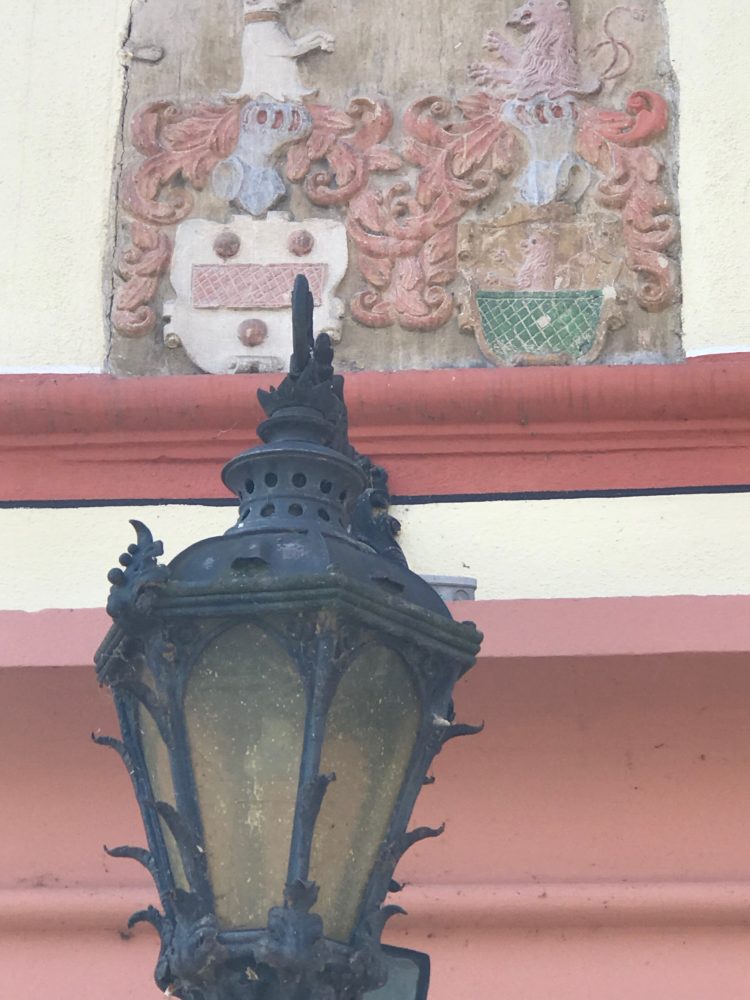
The coat of arms of the von Schoenebeck family (left) above the doorway to Schloss Feldkirch.
In A Legacy and Jigsaw, Sybille Bedford fictionalises the house and her time there to an indeterminate degree. She describes an impoverished childhood, more shabby chic than genteel, with donkeys pulling the carriage rather than horses, the castle lawn seeded with potatoes and sheep grazing on it. Her writing resists the drift to aggrandisement or to depicting an exotic gentry for a common English readership, in the way that Leigh Fermor’s writing sometimes does not:
That rural corner of Baden, the Breisach, was full of small villages like ours and many of them had their Schloss, their manor house, inhabited by families we knew but had ceased to see. At Munzingen there was Count Kaagenegg, Baron Neveux at Bingen, the Gleichensteins at Krotzingen, the Landenbergs … most of them farmed, Kaagenegg produced a renowned wine. Before the war, they all lived, and were expected to live, in a certain style, providing custom and employment for their villagers, and an element of show with their horses (no one sported a motor car), and their house colours and coronets scattered in the German fashion over the silver and the saddle cloths.
It was a quiet Saturday morning and I could have strolled off into the grounds to explore but felt that any number of eyes could be observing me from the fifteen windows, not to speak of the two floors of rooms tucked under the roof. I wondered what had happened to all that fine claret in the cellar. And to the Gothic artwork collection. The Second World War can’t have been kind to either.
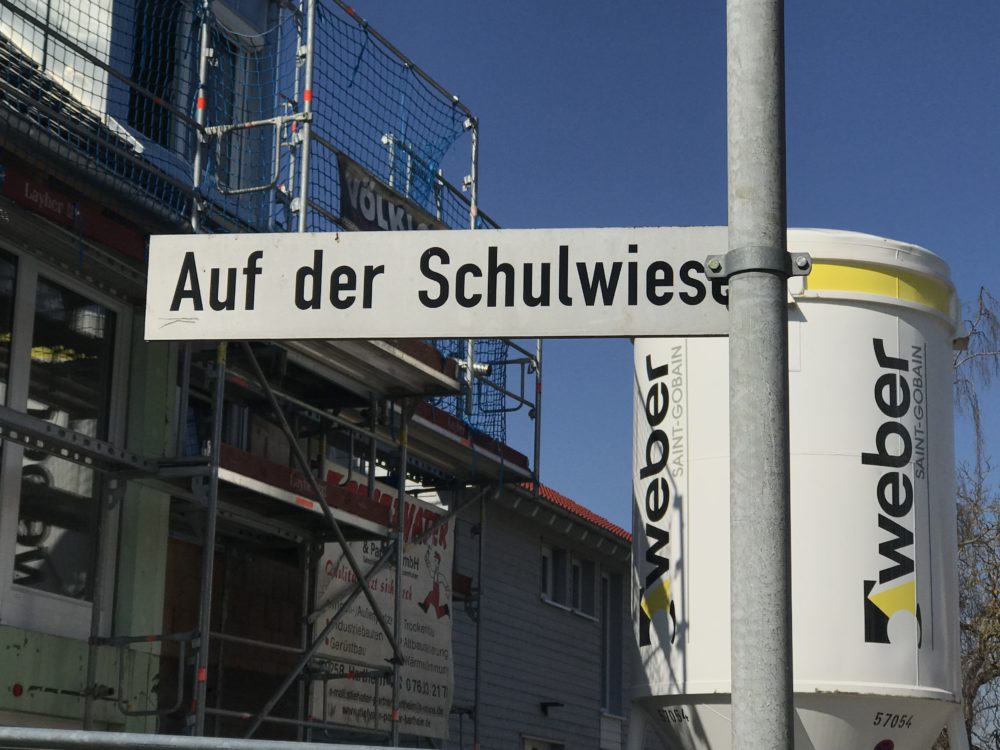
School around the corner, Feldkirch.
I went back out into the village, which at the time of Sybille’s residence had some 350 souls; there’s not many more than that now. For a sunny Saturday morning it was remarkably quiet and deserted. A woman clipped a hedge. Tractors headed to the fields. I stumbled upon the way to school:
My father, beside himself with vexation, decided to send me to the village school. The school-house was a recent building implanted by some distant authority – a class-room on the ground floor and some lavatories above, a flat for the schoolmaster and his family – and it smelled of cement, linoleum and piss. Here I was brought one day in the middle of term. The children, about thirty of them, sat on benches, each with a slate before them, girls on one side, separated by an aisle, boys on the other.
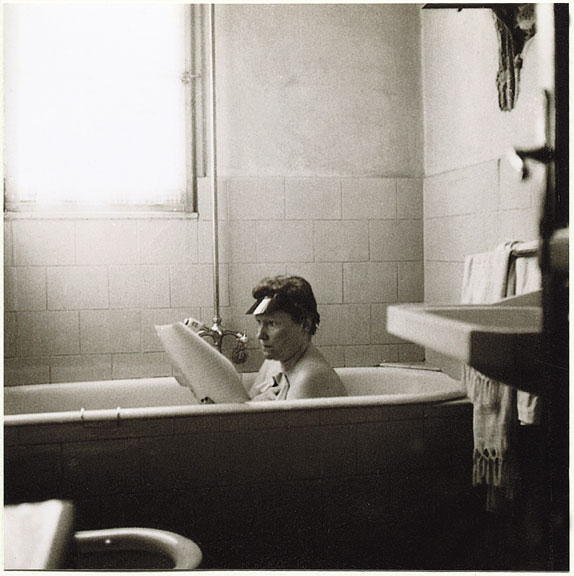
Sybille Bedford in her bath in Rome, 1950. Photo by Evelyn Gendel
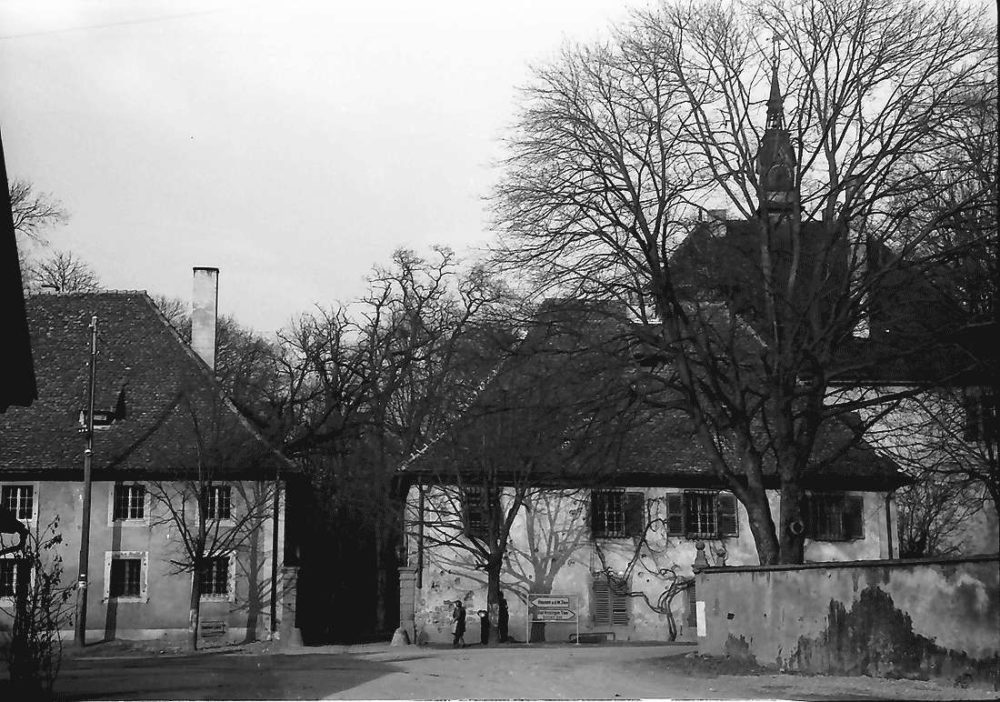
View of the entrance to Schloss Feldkirch.
If you’re wandering around Feldkirch in the footsteps of Sybille Bedford, don’t forget to pay a visit to the Bohrerhof market garden, farm shop and restaurant, which was serving wonderful white asparagus with a variety of fresh produce when I was there.
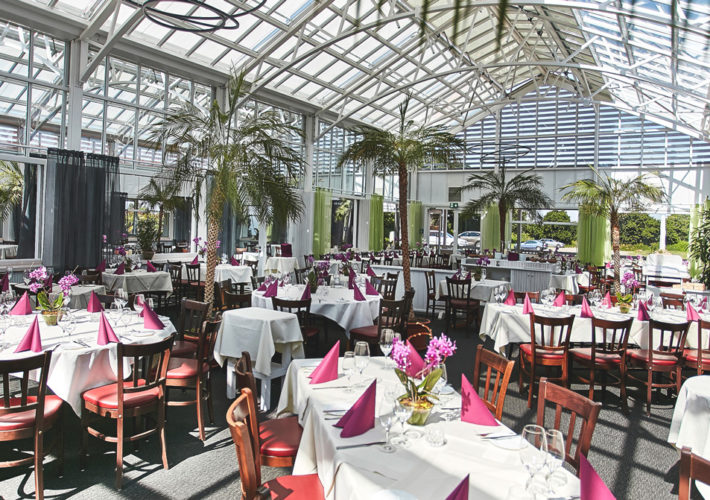
Bohrerhof restaurant and market garden, Feldkirch
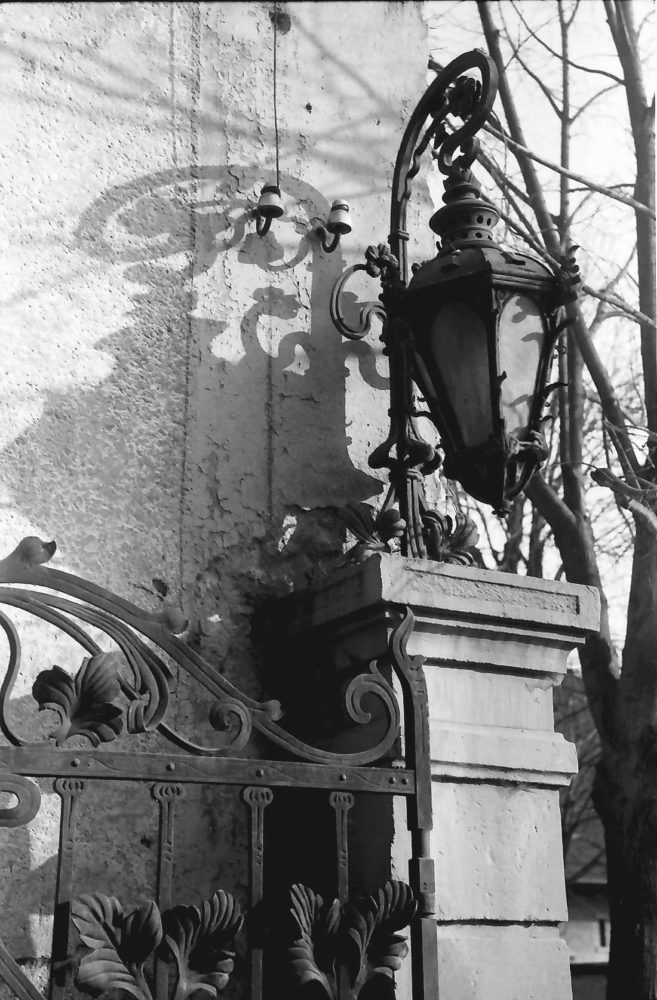
Lantern at the entrance to Schloss Feldkirch. Source:Staatsarchiv Freiburg. Photo: Willy Pragher
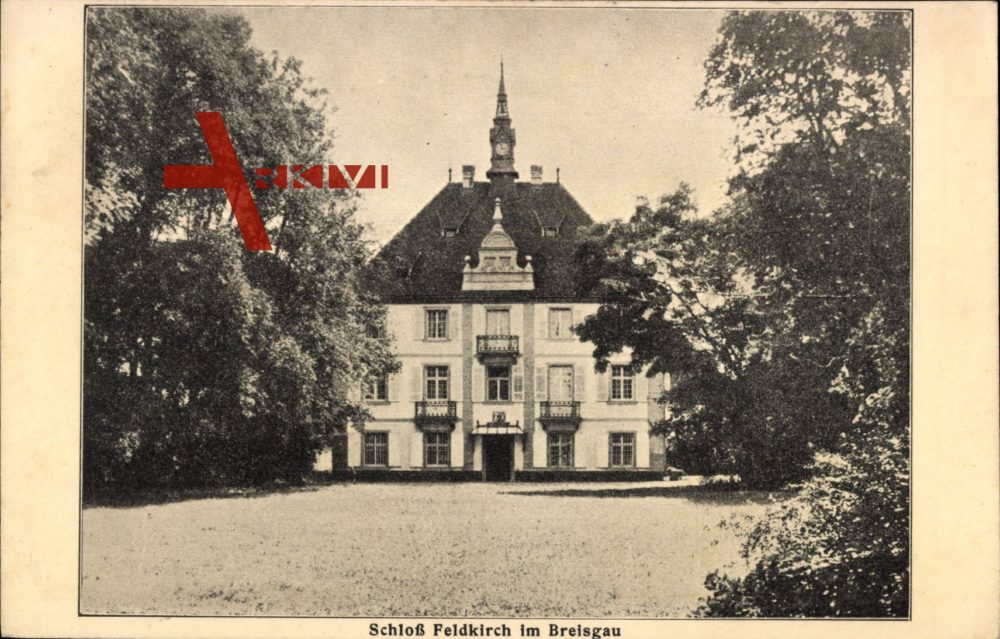
Feldkirch Hartheim Rhein, Blick auf das Schloss


2 thoughts on “Sybille Bedford in Feldkirch”